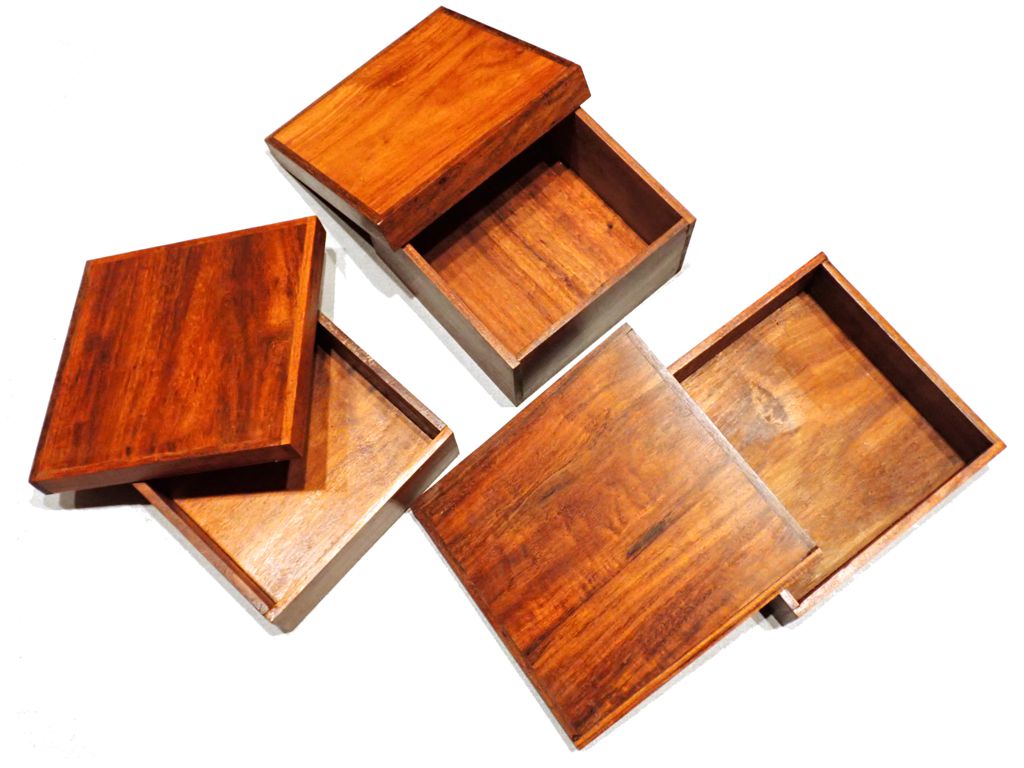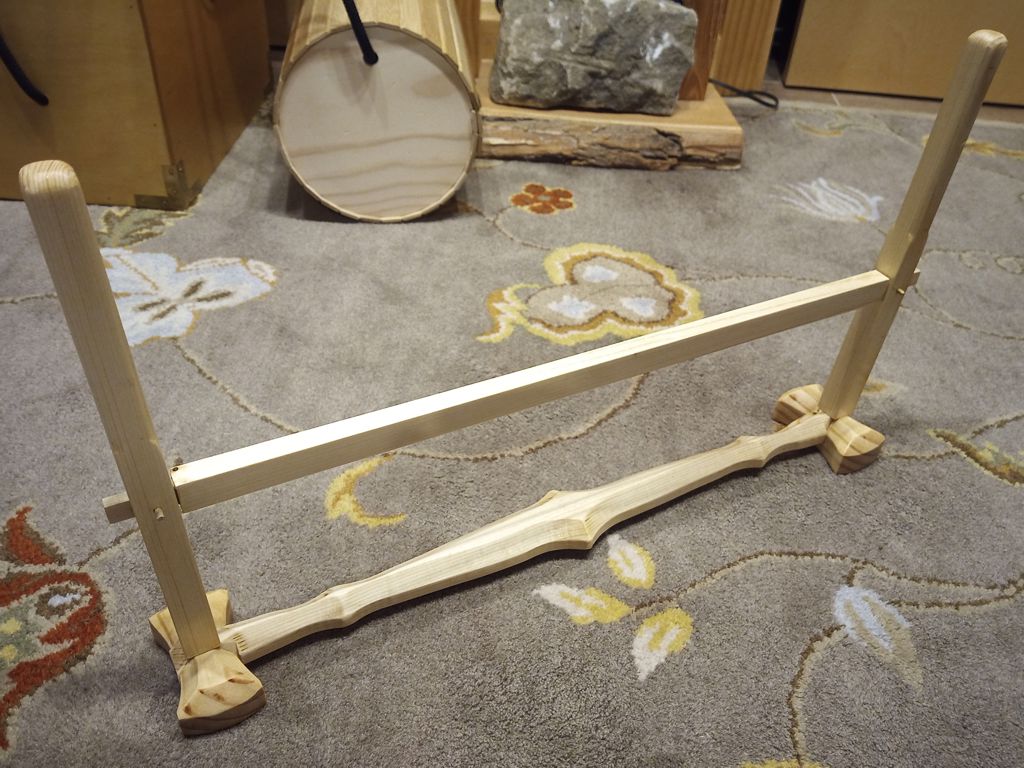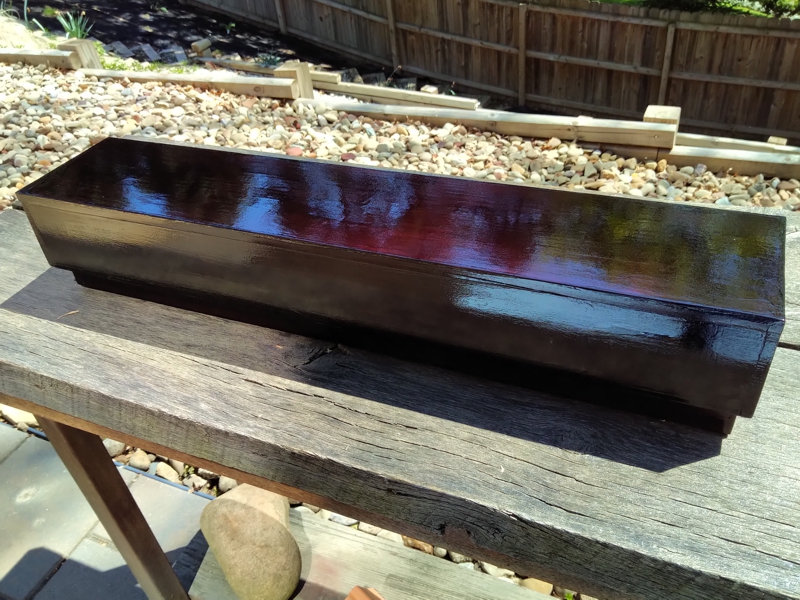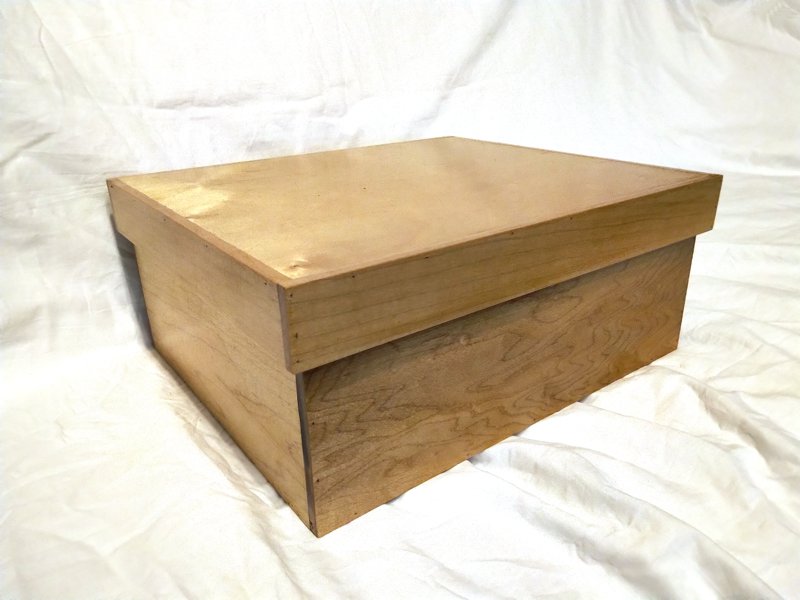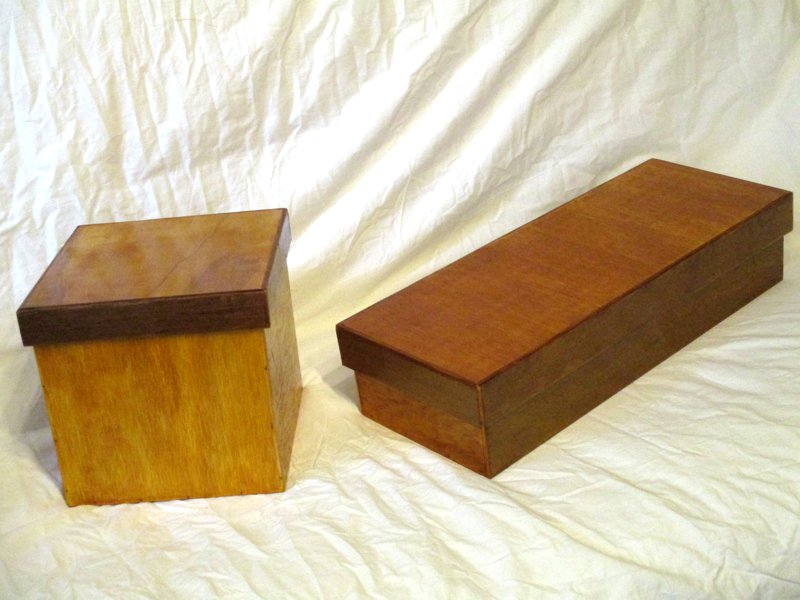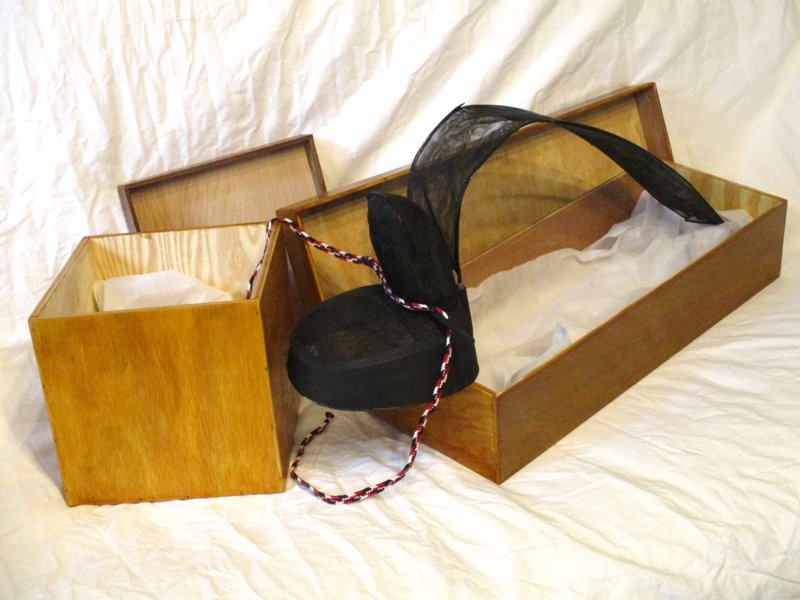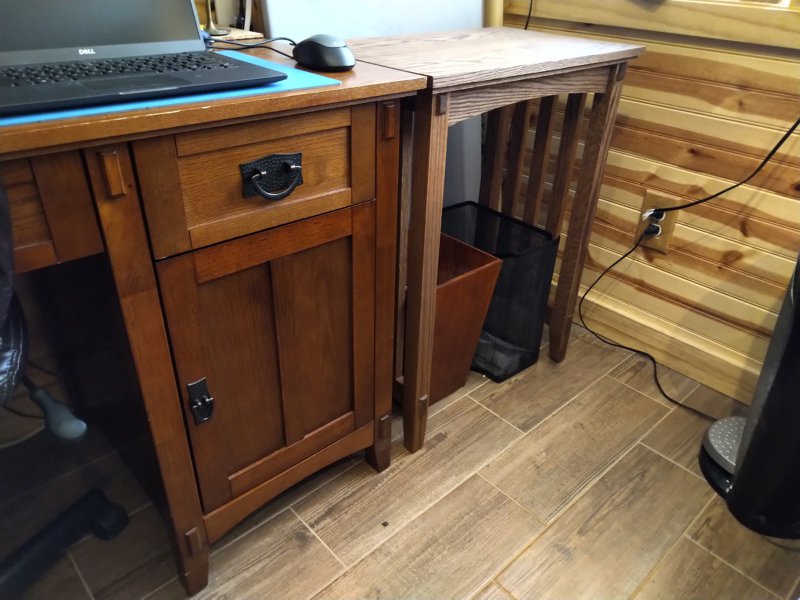I picked up some small-ish thin pieces of mystery tropical wood from a friend, and I had a pile of surplus from the Storage Trays for Tama project, so I decided to make some small lidded boxes to give away. I started this back last fall, but they sat in the garage waiting for another slice of time I could devote to completing them. The largest of these has an 8″ by 8″ lid on a 5″ tall body, so they are mostly too small for storage but a great size for gifts.
The mystery wood boxes are finished with salad bowl oil finish, so you could use them as bento boxes, but since I can’t guarantee that they are water-tight or that the wood is not poisonous, I would not recommend it. This wood is only about quarter-inch thick, so the proportions are attractive. I decided how to use the pieces by stacking up all the wood by size and then moving down through the stack making lids and then boxes to match. All the cutting was on the band saw, then glued and pinned together. Unless the pin deflects inside the wood and pokes out, this method is fast.

These are all made from half-inch pine, and finished with a variety of shellac techniques that I wanted to try. I think my favorite one is the rightmost one in the photo. I started with a really dilute cut of light amber shellac to give the wood a little more color, then top-coated with a thin coat of blonde shellac.
Anyway, I already have plans to fill one of the boxes with braids and add it to a gift basket that our SCA Kingdom is putting together for another Kingdom. In any case, the pile of surplus wood is a little bit smaller than it was, so success.

